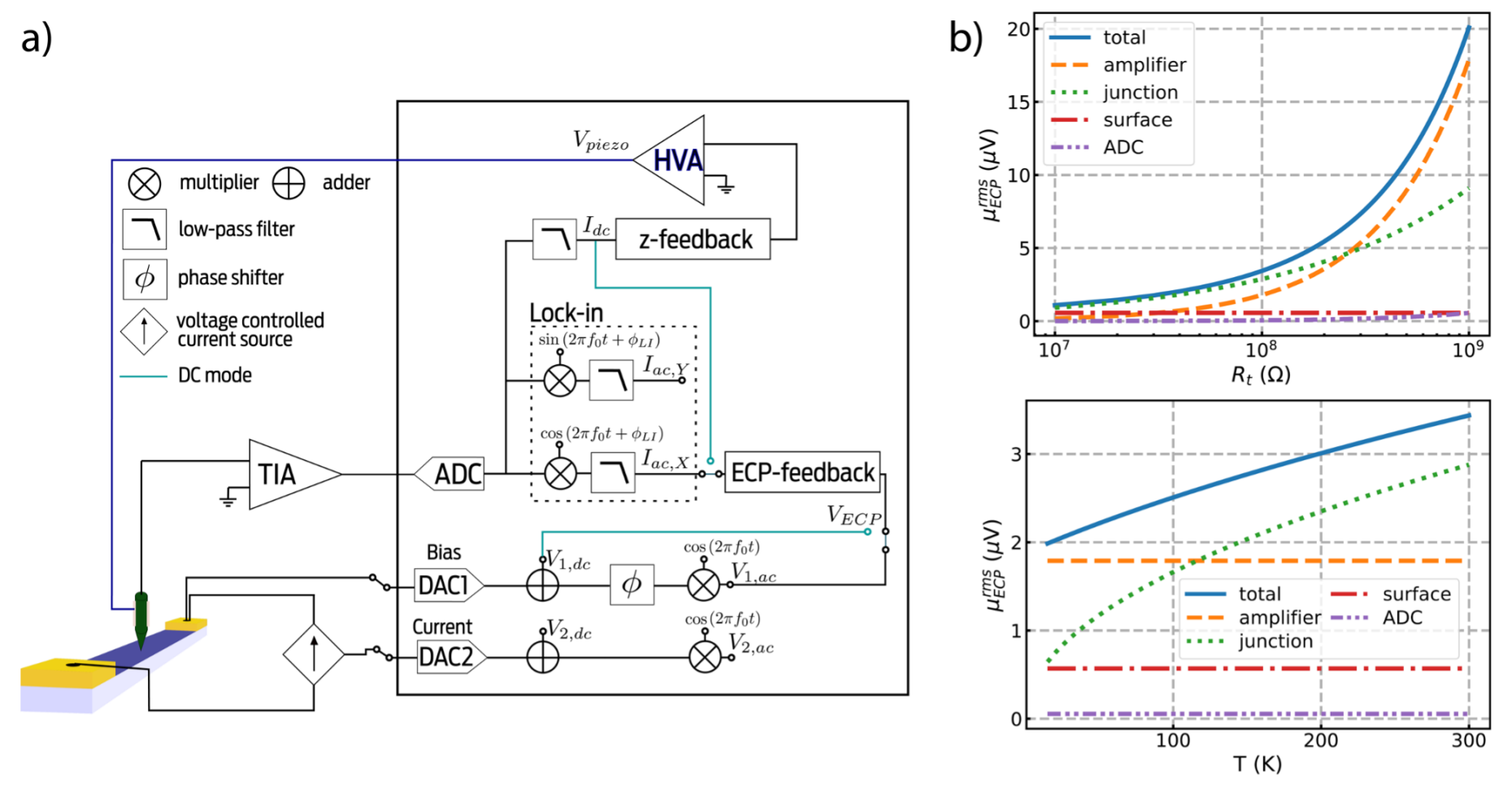Implementation and performance analysis of a fully digital STP procedure
Electrical transport at the nanoscale is a topic that receives currently high attention. Being able to detect and distinguish the influence of electronic and morphological variations on the current path as well as different regimes of charge transport (ballistic, diffusive and hydrodynamic) is at the forefront of current research. Few techniques have been developed to obtain insight into such transport phenomena. Among them, scanning tunneling potentiometry (STP) is a powerful method capable of measuring the local electrochemical potential (ECP) distribution with µV resolution while simultaneously maintaining the functionality of scanning tunneling microscopy (STM), i.e., to acquire the sample topography with Å resolution. STP therefore offers the possibilty to directly relate the electrical transport properties as given by the local ECP to the morphological features of the sample such as grain boundaries, defects and changes in the composition. To detect subtle modifications of the ECP due to interference in electron scattering sub-µV resolution is required which presents a challenging task.

Electrical transport at the nanoscale is a topic that receives currently high attention. Being able to detect and distinguish the influence of electronic and morphological variations on the current path as well as different regimes of charge transport (ballistic, diffusive and hydrodynamic) is at the forefront of current research. Few techniques have been developed to obtain insight into such transport phenomena. Among them, scanning tunneling potentiometry (STP) is a powerful method capable of measuring the local electrochemical potential (ECP) distribution with µV resolution while simultaneously maintaining the functionality of scanning tunneling microscopy (STM), i.e., to acquire the sample topography with Å resolution. STP therefore offers the possibilty to directly relate the electrical transport properties as given by the local ECP to the morphological features of the sample such as grain boundaries, defects and changes in the composition. To detect subtle modifications of the ECP due to interference in electron scattering sub-µV resolution is required which presents a challenging task.
Several different experimental implementations of the STP technique have been demonstrated so far, however, it is not clear if the performance of some is superior to the others. In our work, we carry out a complete performance analysis of STP for different modes of operation [1]. We theoretically analyze the different modes for the first time and discuss also the role of the feedback controller. Further, we present a software-based implementation of STP in a commercial STM setup with both dc and ac detection schemes, providing the first direct comparison between the two modes of operation (Fig. 1a). We show that STP can be implemented in various ways by using modern versatile electronics and clearly identify the advantages and disadvantages of each approach. Moreover, we analyze different sources that contribute to the overall noise in the determination of the electrochemical potential and identify optimal working conditions (Fig. 1b). Our work opens the way to a better understanding of the necessary requirements to achieve a sub-µV resolution in STP which is required for studying subtle changes in ECP due to ballistic and quantum transport effects.
Selected Publications
[1] Performance analysis and implementation of a scanning tunneling potentiometry setup: Toward low-noise and high-sensitivity measurements of the electrochemical potential, T. Markovic, W. Huang, P. Gambardella, and S. Stepanow, Review of Scientific Instruments, 92, 103707 (2021).